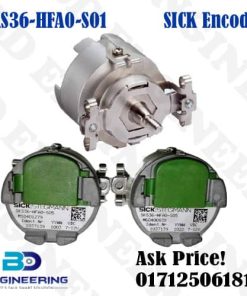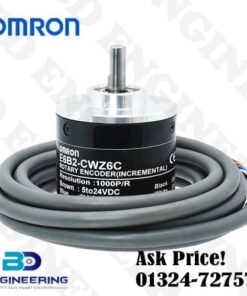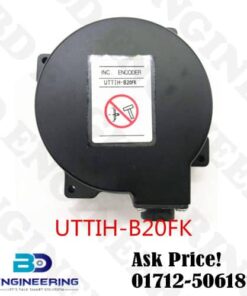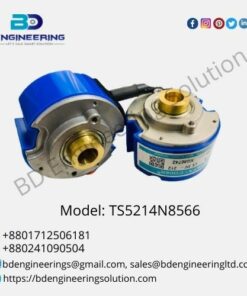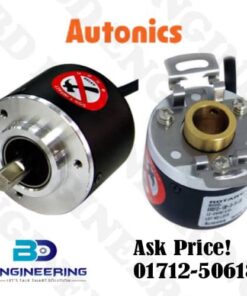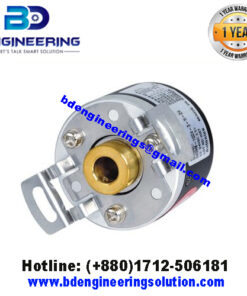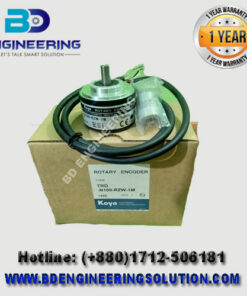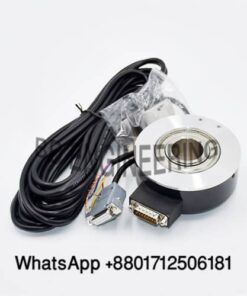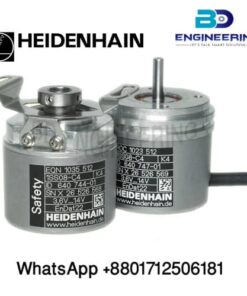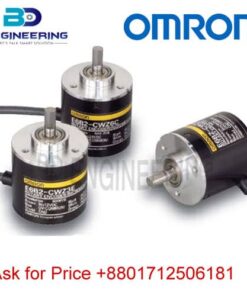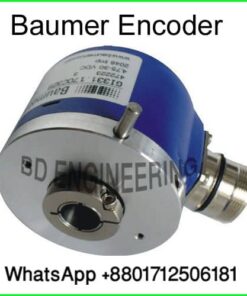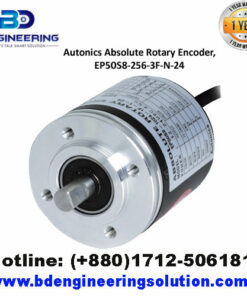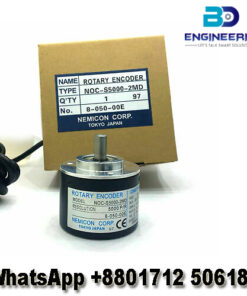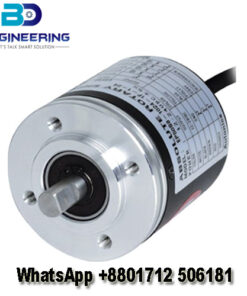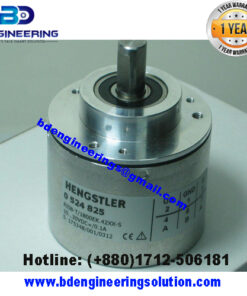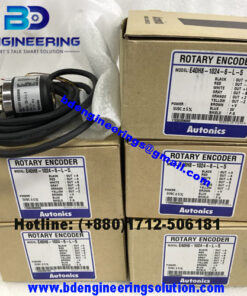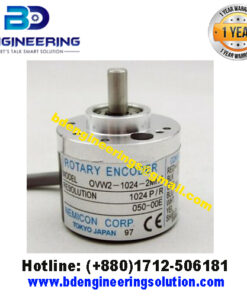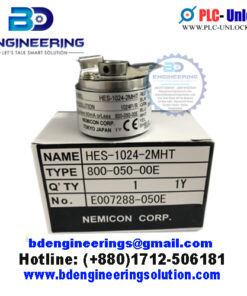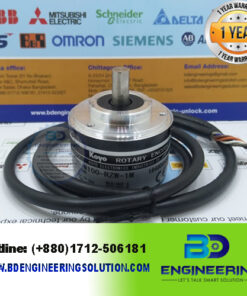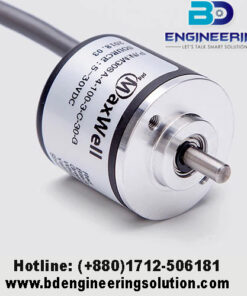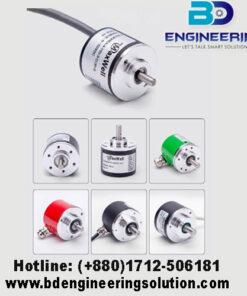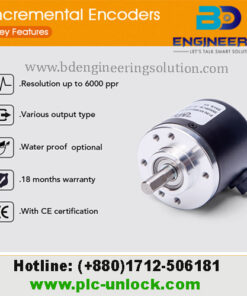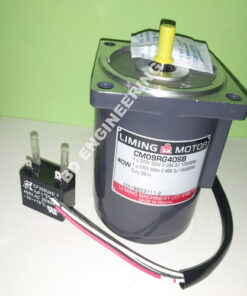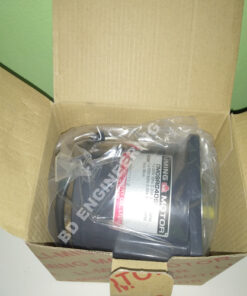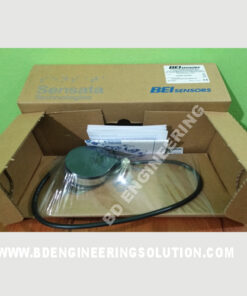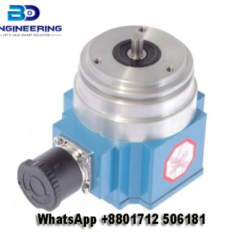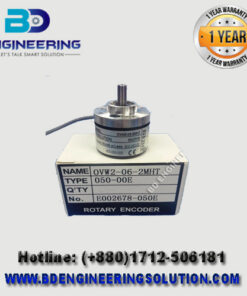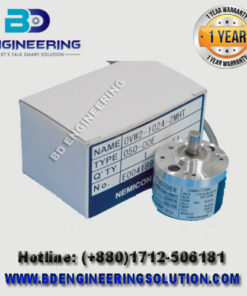A rotary encoder is a device used to convert the angular position or motion of a shaft or axle into an analog or digital signal. There are two main types of rotary encoders: absolute and incremental.
- Incremental Encoder: This type of encoder generates a series of pulses as the shaft rotates. It doesn’t provide absolute position information on its own; instead, it measures changes in position relative to a starting point. To determine absolute position, additional circuitry or counting logic is needed to track the position from a known reference point.
- Absolute Encoder: An absolute encoder provides unique digital code for each position of the shaft within a single revolution. This means it can directly report the exact position of the shaft without needing a reference point or initialization. The output of an absolute encoder typically represents the absolute position of the shaft in either binary or Gray code.
- Binary Absolute Encoder: In a binary absolute encoder, each shaft position corresponds to a unique binary code. For example, a 10-bit encoder can represent 1024 unique positions (2^10).
- Gray Code Absolute Encoder: Gray code is a binary numeral system where two consecutive values differ in only one bit. Gray code is used in some absolute encoders to prevent errors during transition between positions, as only one bit changes at a time.
In summary, while both incremental and absolute encoders measure shaft position, absolute encoders directly provide the exact position without requiring additional tracking logic or reference points. They are useful in applications where knowing the precise position of a shaft is critical, such as in robotics, CNC machines, or industrial automation systems.
Rotary Encoder-absolute encoder
Rotary Encoder-absolute encoder
Rotary Encoder E6B2-CWZ6C 1024 PPR 5 to 24VDC 2M Cable Omron
Rotary Encoder-absolute encoder
Rotary Encoder-absolute encoder
ABB CD522 1SAP260300R0001 ENCODER 2 INPULS PWM 2 OUTPULS MODULE
Rotary Encoder-absolute encoder
Rotary Encoder-absolute encoder
ROTARY ENCODER Incremental Shaft type S48-8-1000ZT 5-24v LS Korea
Rotary Encoder-absolute encoder
E40H8-1024-6-L-5 Encoder Incremental dia40mm Hollow Shaft 8mm Autonics
Rotary Encoder-absolute encoder
Rotary Encoder-absolute encoder
Autonics rotary encoder e40s6-100-3-t-24 ppr100 in Bangladesh
Rotary Encoder-absolute encoder
Rotary Encoder-absolute encoder
Koyo TRD-2T1000BF | Incremental Rotary Encoder 1000 Pulse Per Revolution (ppr)
Rotary Encoder-absolute encoder
Elevator (Lift) rotary encoder EL-A1A30-7LNB1-1024-JRE Hollow type 30 dia cheap price in bd
Rotary Encoder-absolute encoder
Heidenhain rotary encoder rod 426 150 16s15-65 shaft & Hollow type price bd
Rotary Encoder-absolute encoder
Rotary Encoder (Incremental) 1000PR Model-E6C2-CWZ6C Sales in BD Price
Rotary Encoder-absolute encoder
Baumer Incremental encoder EIL580P-TT15 / 11127691 / Eltra trade price in Bangladesh
Rotary Encoder-absolute encoder
2500P8 L6-5V TS5214N8566 2500pulse Tamagawa Rotary Encoder for Machine in bd price
Rotary Encoder-absolute encoder
Autonics Absolute Encoder EP50S8-256-3F-N-24 sales distributor in Bangladesh
Rotary Encoder-absolute encoder
Rotary Encoder NOC-H5000-2MD-8-050-00E NEMICON 5000 PPR sale price in bd
Rotary Encoder-absolute encoder
Autonics Absolute | Rotary Encoder EP50S8-256-3F-N-24 | 50mm Diameter | NPN Output | 12-24 VDC
Rotary Encoder-absolute encoder
INCREMENTAL ROTARY ENCODER # RI58-T/1800EK.42XX-S Shaft & Hollow type PPR
Rotary Encoder-absolute encoder
Autonics Incremental Rotary Encoder E40H12-60-3-V-24 sales service in bd
Rotary Encoder-absolute encoder
Rotary Encoder-absolute encoder
Rotary Encoder Incremental Model: HES-1024-2MHT sales price in Bangladesh
Rotary Encoder-absolute encoder
Rotary shaft encoder incremental Special PPR-1024PR, 500PR, 600PR, 2500PR
Rotary Encoder-absolute encoder
Rotary Encoder-absolute encoder
Motor feedback rotary encoder | incremental | Absolute | mechanical | solid-shaft
Rotary Encoder-absolute encoder
Rotary Encoder-absolute encoder
Incremental Rotary Encoder 6000ppr waterproof Various Output
Motion control & drive
Rotary Encoder-absolute encoder
Rotary Encoder-absolute encoder
SICK brand sales-service in BD | Motor Feedback Encoder #SRS50-HWA0-K21
Motion control & drive
NEMICON Incremental Rotary Encoder OVW2-1024-2MHT, 1024ppr price in BD
We deal with brands like Nemicon | Autonics | Baumer | SICK | Beckhoff | HENGSTLER | Motor Feedback | LIKA rotary encoders | SIKO | HENGSTLER |

